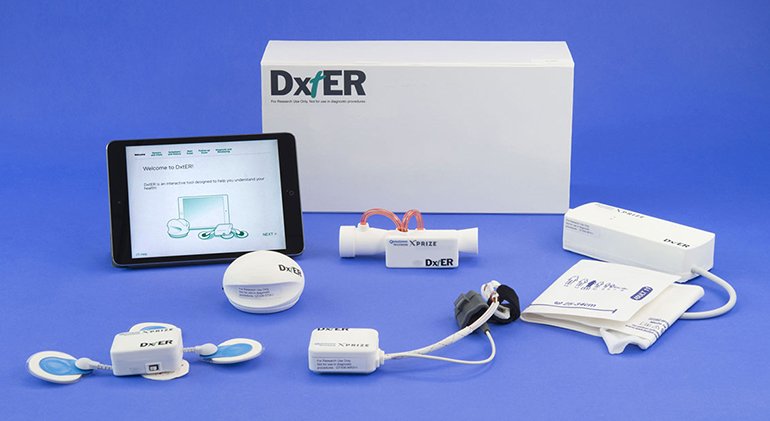This is GizmoMD
Dear Friends, It’s been a while. If you’ve been wondering what happened to Medgadget — you’re not alone. It’s been a few years since anything was published, and like many of you, I’ve missed the excitement of discovering and sharing the latest in…
The Latest
Ultrasound-Powered Implant Offers Personalized Relief for Chronic Pain Sufferers
A team of researchers at the University of Southern California has unveiled a groundbreaking wireless implant that could transform how chronic pain is managed—without the need for opioids or bulky batteries. The flexible device, known as the UIWI stimulator, is powered by a wearable ultrasound transmitter and is designed to deliver targeted electrical stimulation to the spinal cord. Unlike traditional spinal cord stimulators, this implant is bendable, battery-free, and capable of adapting to a patient’s pain levels in real time. What sets this device apart is its integration of artificial intelligence. By analyzing EEG brain signals, a machine learning model…
Researchers Reprogram E. coli to Transform Plastic Into Paracetamol
In a groundbreaking fusion of synthetic chemistry and biotechnology, researchers at the University of Edinburgh have engineered E. coli bacteria to convert plastic waste into paracetamol, the common painkiller also known as acetaminophen. The process begins with polyethylene terephthalate (PET)—the plastic found in water bottles and food packaging—which is chemically broken down into terephthalic acid. This compound is then fed to genetically modified E. coli, which, through a fermentation process, transforms it into paracetamol in under 24 hours. Remarkably, the entire process occurs at room temperature and produces virtually no carbon emissions, offering a sustainable alternative to fossil fuel–based pharmaceutical manufacturing. The key…
Wireless Neck Wearable Enables More Accurate Detection of Sleep Disorders
Northwestern University researchers have unveiled a soft, skin-adhering sleep monitor that could redefine how we detect and manage sleep disorders. Unlike traditional wrist or finger devices, this wireless patch is worn at the base of the neck, allowing for more precise readings of sleep stages, body orientation, respiratory patterns, and even snoring. The device not only tracks but also reacts—using gentle vibrations to prompt users to shift positions when snoring is detected, potentially reducing sleep apnea episodes. The innovation bridges the gap between consumer-grade trackers and hospital-grade polysomnography. By capturing data from the body’s core—close to the carotid artery—it can…
Army Medics Shape Next-Gen MEDEVAC Aircraft
Tactical care is evolving—and this time, it’s being shaped by the medics themselves. The MV-75 is the military’s upcoming MEDEVAC aircraft, positioned to succeed the long-serving UH-60 Black Hawk. But this isn’t a traditional top-down redesign. In Oregon, Army National Guard flight medics are actively testing and refining the prototype cabin through simulated trauma missions. Their insights, drawn from both military service and civilian emergency roles, are influencing key updates that prioritize speed, access, and adaptability during flight. The redesigned cabin features 30 percent more usable space, modular rail systems for custom equipment layouts, and articulated litter mounts that enhance…
23andMe: A GizmoMD Review (May 2017)
Note to readers: These posts are some of my favorite pieces from my time with Medgadget—stories that still resonate, even if they’re a bit dated. For now, consider this a placeholder, a glimpse into the past, until it’s replaced with fresh, exclusive GizmoMD content. Thanks for reading and I hope you enjoy! In 2007, Anne Wojcicki’s 23andMe transformed personalized health with the unveiling of a direct to consumer genetic testing service in which subscribers would receive information about their ancestry, physical traits, and disease carriers by simply providing a saliva sample via mail to the company’s labs. Since then, 23andMe has garnered significant media…
NAPTUNE Device Detects Disease Markers in Less Than 45 Minutes
Imagine having the power of a medical lab right in the palm of your hand. That’s the idea behind NAPTUNE, a new handheld diagnostic device created by researchers at the National University of Singapore. This tool can quickly find telltale signs of disease—like bits of DNA or proteins—in less than 45 minutes, without any complex lab equipment. It opens the door to faster, cheaper health checks in clinics, rural areas, or even the comfort of home. NAPTUNE works by using a smart chemical reaction. First, it scans for specific disease clues using a natural human enzyme. Then, it launches a…
BLIPI Profiles Newborns’ Immune Health with a Single Drop of Blood
Researchers from the Singapore-MIT Alliance for Research and Technology (SMART) and KK Women’s and Children’s Hospital (KKH) have developed a groundbreaking device called BiophysicaL Immune Profiling for Infants (BLIPI). This first-of-its-kind system provides real-time insights into newborns’ immune function using just a single drop of blood. By enabling early detection of severe inflammatory conditions, BLIPI offers a minimally invasive and rapid diagnostic tool that could significantly improve neonatal care, particularly for premature infants. Premature babies are highly vulnerable to life-threatening conditions such as sepsis and necrotizing enterocolitis (NEC), which can escalate quickly and require immediate medical intervention. Traditional diagnostic methods…
Auditory Brainstem Implants With Soft, Flexible Design Shows Promise
Scientists at Mass General Brigham have developed a new kind of hearing implant that may help people who are deaf due to certain medical conditions. This device, called an auditory brainstem implant (ABI), is different from cochlear implants, which work by sending sound signals to the inner ear. Instead, ABIs send signals directly to the brainstem—the part of the brain that processes sound—bypassing damaged parts of the ear. The researchers designed this new ABI with soft, flexible electrodes, making it more comfortable and better at delivering sound signals than older versions. To test the implant, scientists conducted experiments with two…
AI Tool Detects Throat Cancer Through Voice Analysis
A groundbreaking AI tool developed at Emory University is transforming throat cancer diagnosis by analyzing patients’ voices. Assistant professor Anthony Law has trained a deep neural network to detect laryngeal cancer with remarkable accuracy, using voice recordings as diagnostic markers. The AI model identifies subtle vocal changes that indicate the presence of tumors, enabling primary care physicians to diagnose cancer earlier and more effectively. Traditionally, laryngeal cancer diagnosis requires specialized expertise, as voice changes can stem from various conditions. Law’s AI system bridges this gap, providing clinicians with a powerful tool to distinguish between benign voice alterations and cancer-related dysphonia.…
TACIT AI Algorithm Enhances Cancer Diagnosis and Treatment
Researchers at Virginia Commonwealth University’s Massey Cancer Center have unveiled the TACIT algorithm, a revolutionary AI-driven tool designed to enhance cancer diagnosis and treatment planning. By analyzing complex patient data, TACIT identifies subtle patterns that traditional methods often miss, enabling oncologists to make faster and more precise decisions. This advancement is particularly promising for aggressive cancers, where early intervention can significantly improve outcomes. The algorithm leverages deep learning to refine treatment strategies, offering personalized recommendations based on a patient’s unique genetic and clinical profile. Unlike conventional diagnostic approaches, TACIT continuously adapts to new data, ensuring its predictions remain accurate and…

















